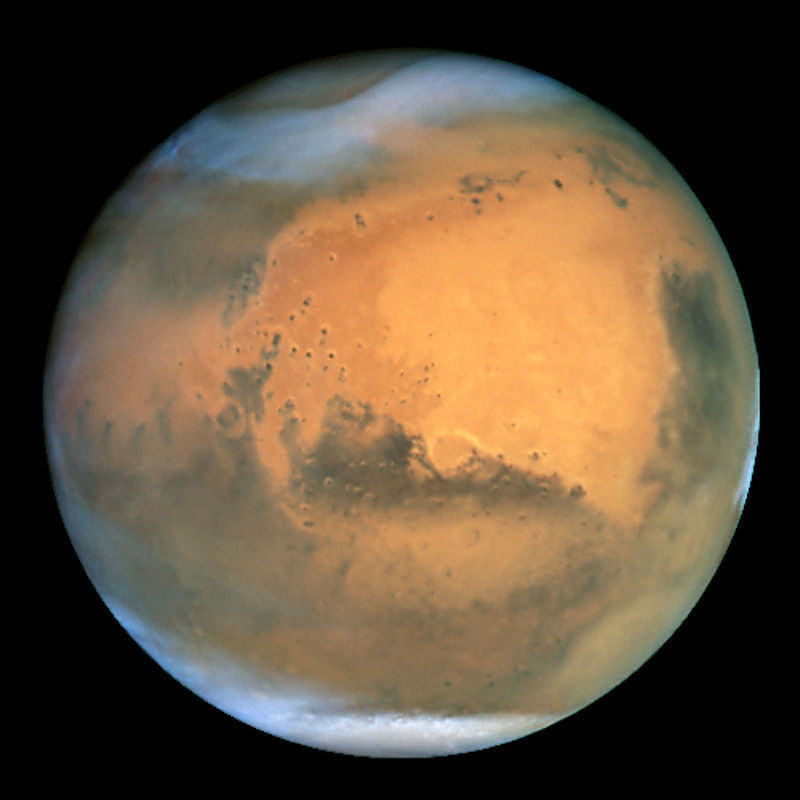Mars hints at possibility of colonization
View of Mars from the Hubble Telescope in 2001.
October 6, 2015
The discovery of water on Mars may not open up the possibility of colonizing the neighboring Red Planet — at least not yet.
NASA’s Mars Reconnaissance Orbiter recently discovered evidence of flowing water on Mars. The water appears on the dark streaks of the planet’s surface during the warm seasons and disappears during the cool seasons.
This discovery of water may lead some people to believe that colonization of the Red Planet is on the horizon for the human race. But many factors, such as expenses and survival, are keeping the human race marooned on Earth for the time being.
“A mission this complex is like turning Des Moines into New York City,” said Bong Wie, professor of aerospace engineering.
A mission of this complexity and magnitude would require between 10,000 and 20,000 engineers and scientists, Wie said.
Most importantly, the mission needs someone to provide the funding, whether it is a government entity like NASA or a private company.
NASA’s Mars rover Curiosity cost $2.5 billion to build and launch. The Apollo Program cost 5 percent of the national budget from 1961 to 1972 — that’s $110 billion in today’s money.
The United States is currently spending more money on pet food than on NASA, said Massimo Marengo, associate professor of physics and astronomy. Even with a secure budget, living on Mars would be perilous.
“The current conditions on the surface of Mars are worse than the conditions in Antarctica,” Marengo said.
Marengo said it is not possible to colonize Mars the same way different continents on Earth were colonized. Even with Earth in the worst possible conditions and deteriorated by global warming, it would still have better conditions for human life than Mars.
Mars lacks oxygen, and the irradiated ground makes irrigation impossible. The water contains perchlorates, which would be toxic to humans. A prolonged stay in zero-gravity creates many health problems. People’s bones would weaken and their muscles would shrink — most importantly, their heart.
“Despite the exercise, [humans on Mars] won’t be able to walk,” Marengo said.
Creating a self-sustaining ecosystem won’t work because scientists have yet to find a way to create one without poisoning its inhabitants with carbon dioxide. Even with the proper life support systems and water purifiers, if anything broke down, it would take six to nine months to receive supplies from Earth.
Despite the hard science working against colonization, some private entities are still willing to put humans on Mars.
Mars One is a project that was started in 2012 and plans on taking a one-way trip to Mars starting in 2026, with subsequent crews departing every 26 months. A reality TV show will fund this ambitious project about the crew’s exploration.
“The most concerning part is they don’t have a single piece of hardware to be able to make a permanent outpost,” Marengo said. “They need technology, which is not available now.”
Establishing a base on Mars isn’t impossible, but it will require the correct technology and decades to plan.
We wouldn’t be able to send a large amount of people to Mars, but enough for a permanent self-sufficient outpost similar to the ones we have in Antarctica, Marengo said.
“We are explorers, we always want to go to the next hill,” Marengo said. “You learn a lot by pushing and exploring the next step … it’s the spirit of what we are.”







